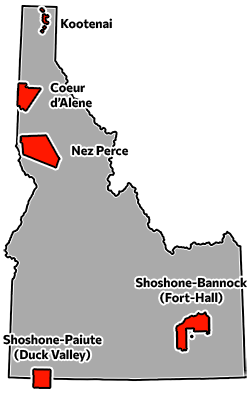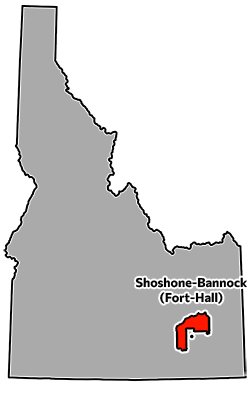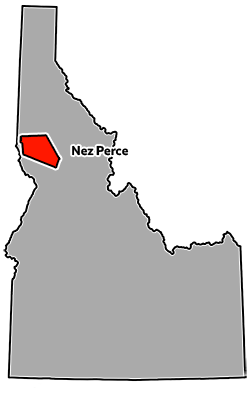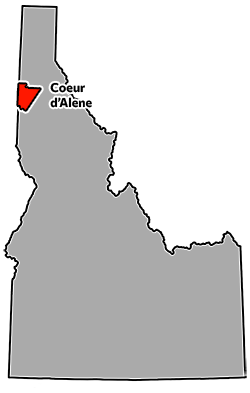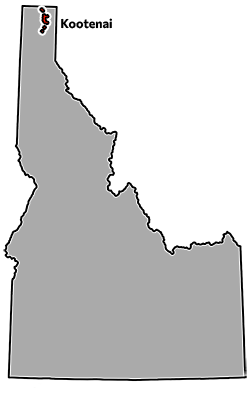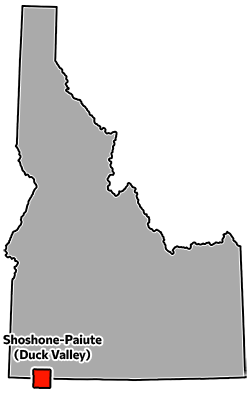FORT HALL — In the Blackfoot School District, which has a Native American population of about 650, too many students had never been to the nearby Fort Hall Reservation or the Shoshone-Bannock Tribal Museum.
So Blackfoot High’s Indigenous Club decided to plan a field trip.
The teens hosted fourth graders, who study Idaho history and Native Americans, so they could pair their in-class learning with real-world experiences. After all, the headquarters of the Shoshone-Bannock tribes were only a short drive away.
Still, what’s been called an “invisible wall” seemed to separate the Fort Hall and Blackfoot communities. But after months of planning, and some help from Joy Mickelsen, the district’s American Indian Education Director, these high school students brought the two worlds together for a day.
Sandra Christensen, a fourth grade teacher at Blackfoot’s Ridge Crest Elementary, said about half of her students didn’t know that the tribes are their neighbors.
“This is an amazing opportunity, so we jumped on it and wanted to be a part of it,” she said about the field trip. “It means so much more than just hearing about it from a book.”
Nivea Oliva, the Shoshone-Bannock Festival Powwow Princess and one of the teens who helped with the February field trip, said the outing was a way to reclaim education.
“Our grandparents and sometimes parents went through the boarding schools, and that created generational trauma. They stopped us from using our language, they took away every part of us,” she said. “So now we are working to help heal ourselves and learn our culture.”
Here are some glimpses into the activities the fourth graders participated in, from spear throwing to crafts to traditional games.
Learning about culture: A visit to the museum
All fourth graders got to visit the Shoshone-Bannock Tribal Museum, where Manager Rosemary Devinney shared some of her knowledge about treaties, tribal government, and the tribes in Idaho with students.
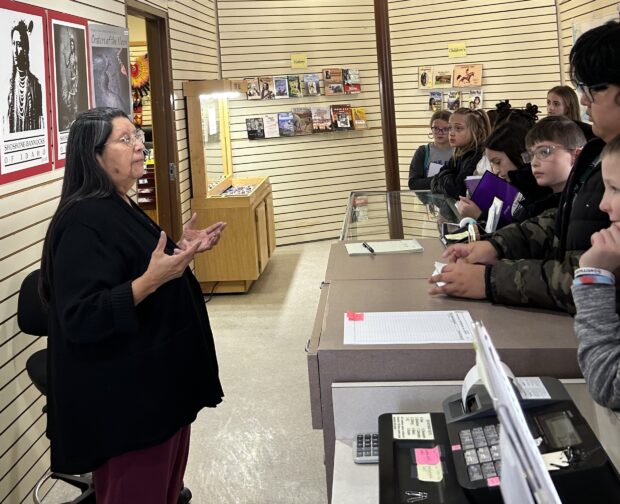
Students took notes so they later could participate in an essay contest sponsored by Blackfoot High’s Indigenous Club.
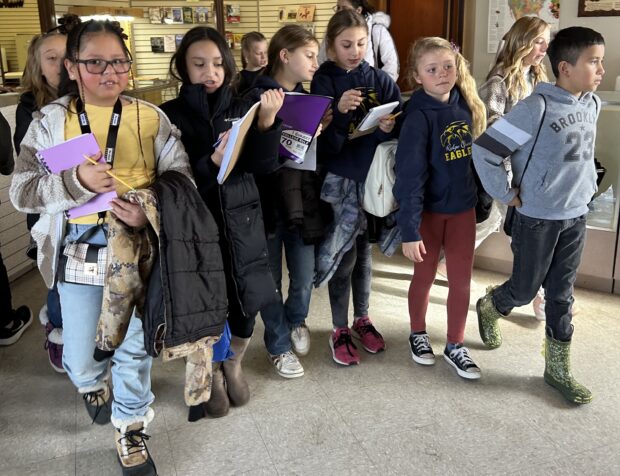
Students looked at displays showcasing traditional dress, food sources, beadwork, and customs.
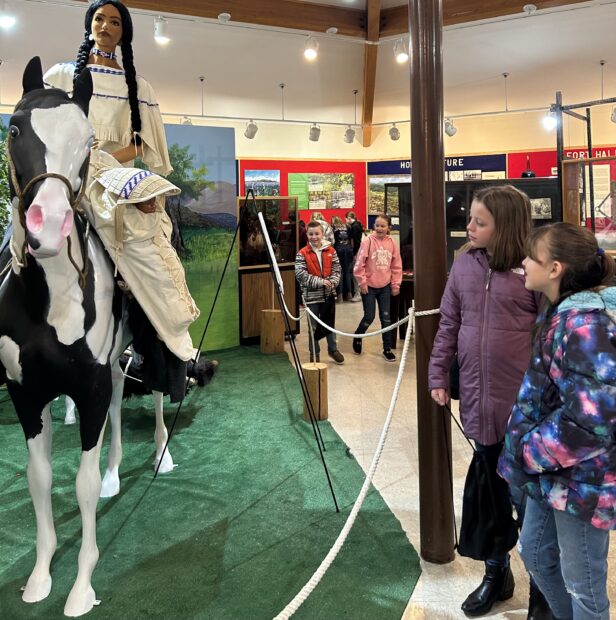
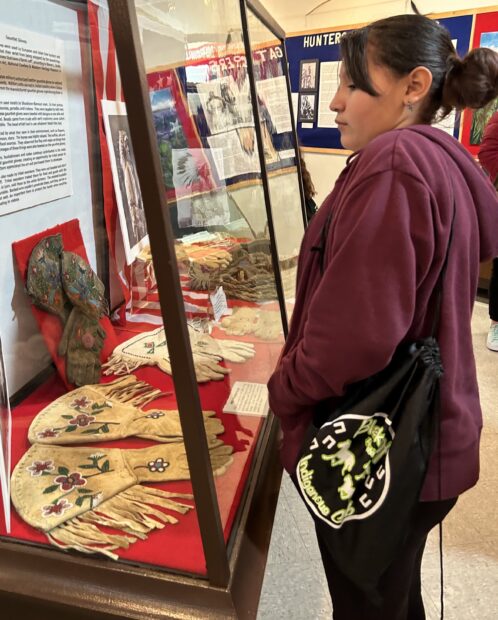
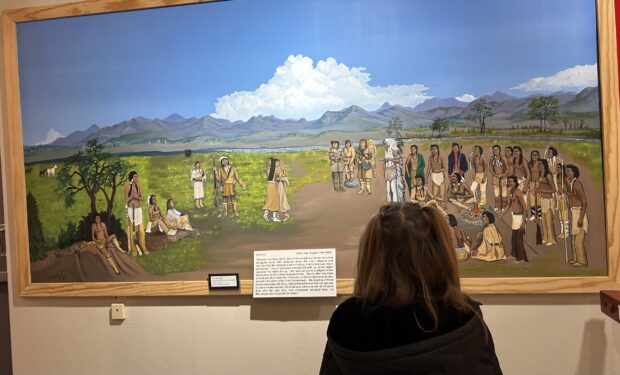
Sharing a culture: Students learn spear-throwing, powwow dancing, traditional games, Shoshoni words and more
After the museum visit, students went on a tour of Fort Hall, then went to a local event center. They learned traditional activities like spear-throwing, which was historically a skill that Native American boys practiced. Below, students try to hit a target as an Indigenous Club member looks on and provides tips.
Spear-throwing
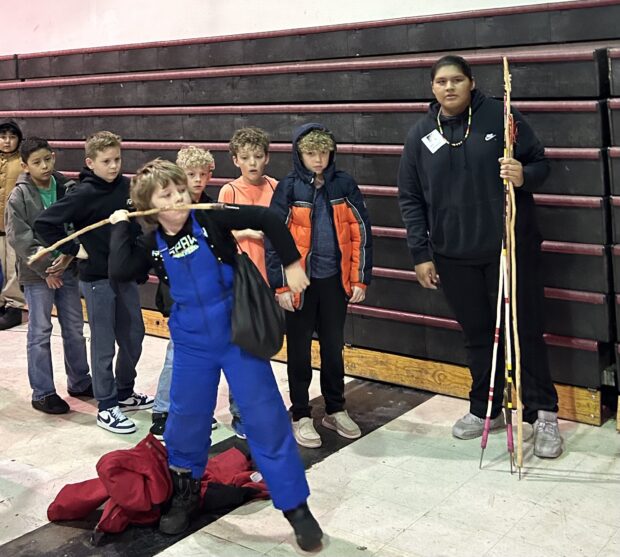
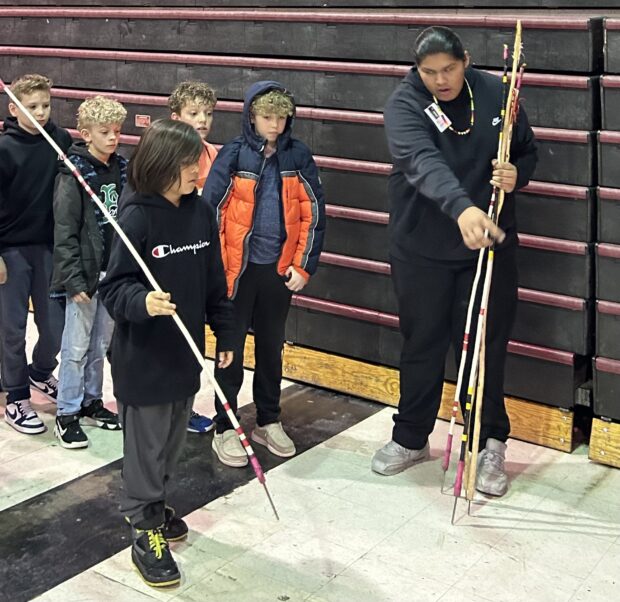
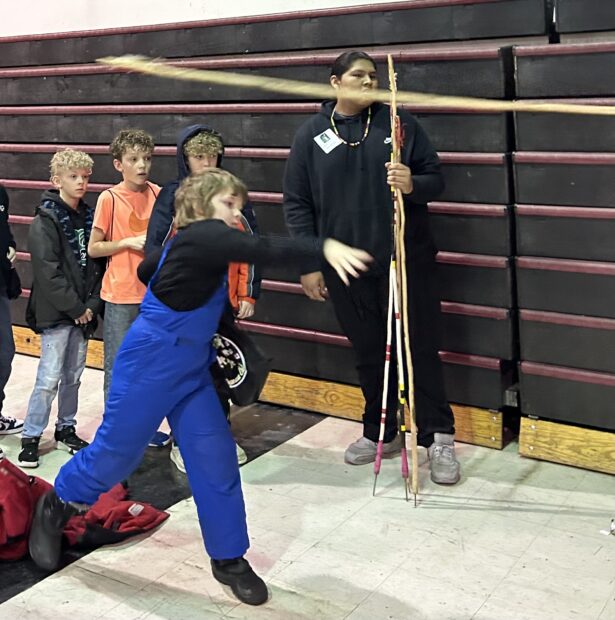
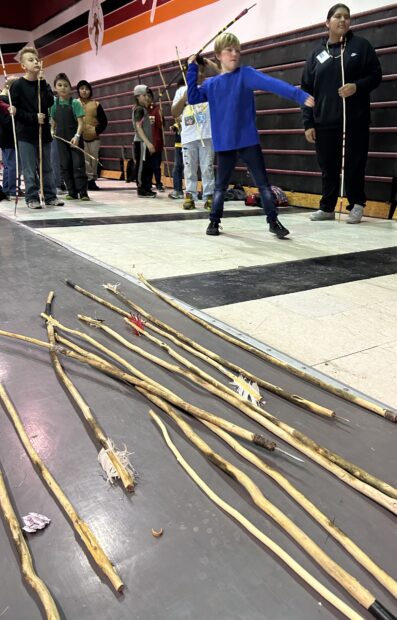
“A lot of these kids, even the ones who live on the reservation, don’t know about these games … This is a good chance to teach Idaho history from a Native American perspective.” — Michelle Hernandez, Indian Education Paraeducator, Blackfoot School District
Shinny stick game
Shinny is a traditional game for girls that’s similar to field hockey. Check out a short video of the game here.
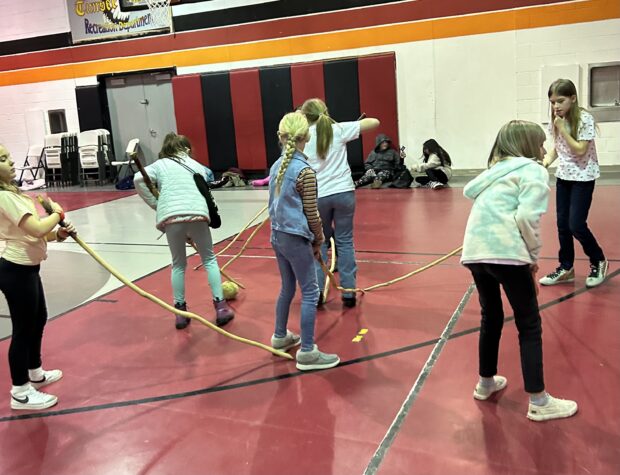
Rock throwing
Rock throwing was another traditional girls’ game. In this short video, girls try to hit a target with their rocks. Bailey Dann, an Indian Education para-educator, helped show the students how to play and said the field trip was a “powerful way to engage students who might not have the opportunity to engage in place-based learning.”
“We get to hear from communities who don’t normally get to share their perspective,” she said.
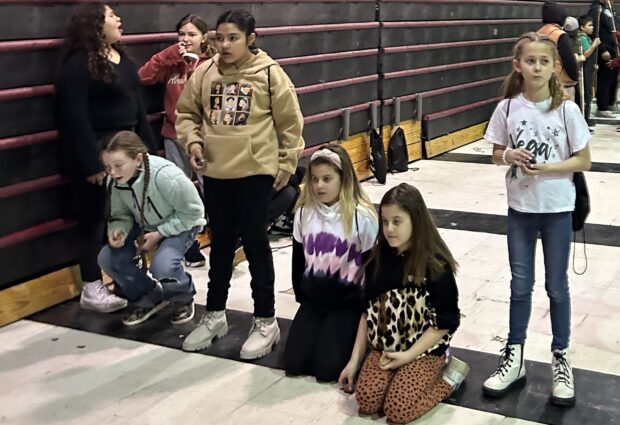
Rock juggling
Michelle Hernandez, an Indian Education para-educator for the Blackfoot School District, teaches students about rock juggling, another game traditionally played by girls. “All we used to have to play with were sticks and rocks,” she said.
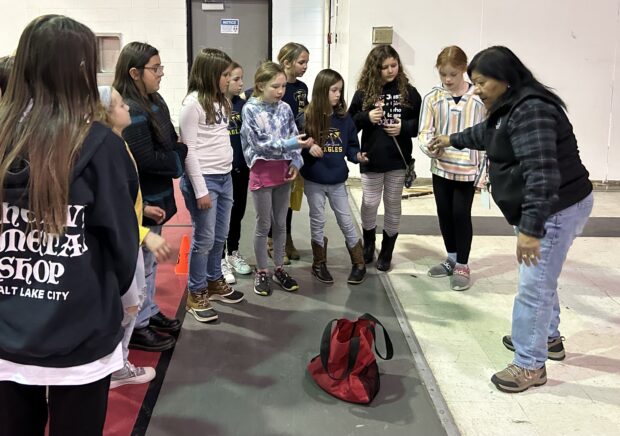
“We want to show our culture so they respect us more. The more they know, the better.” — Dacree Coby, Blackfoot High student.
Powwow dancing and Shoshoni words
Student members of the Indigenous Club taught kids a few words in Shoshoni and showed them some traditional powwow dances.
Dacree Coby, in the blue traditional dress, said playing games and being active helps students remember lessons better.
“We want to show our culture so they respect us more,” she said. “The more they know, the better.”
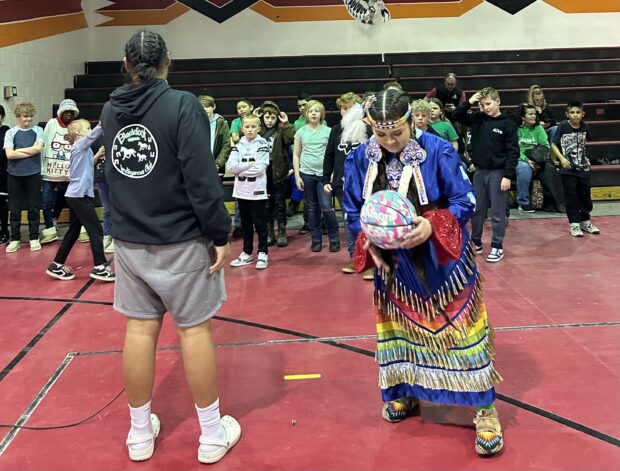
Students also learned how to make a God’s Eye, a traditional Shoshone-Bannock craft that can be given to loved ones to protect them.
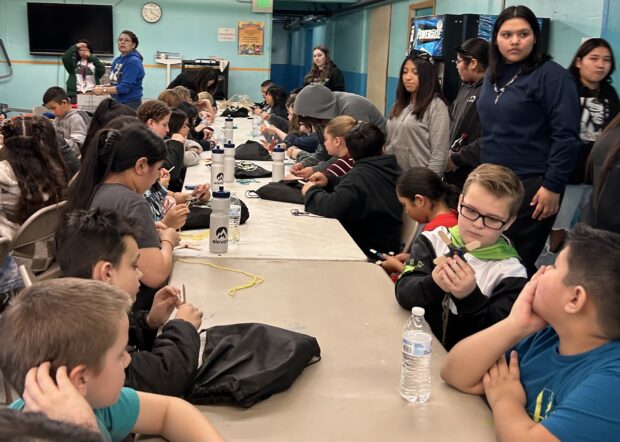
Below are photos of a student’s finished God’s Eye.
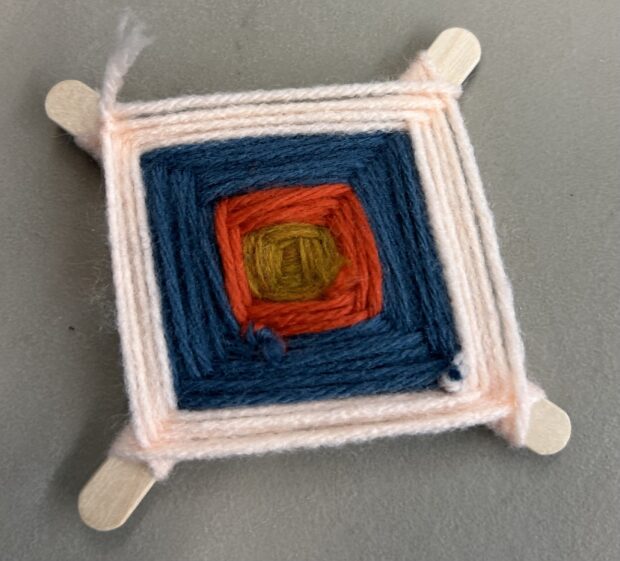
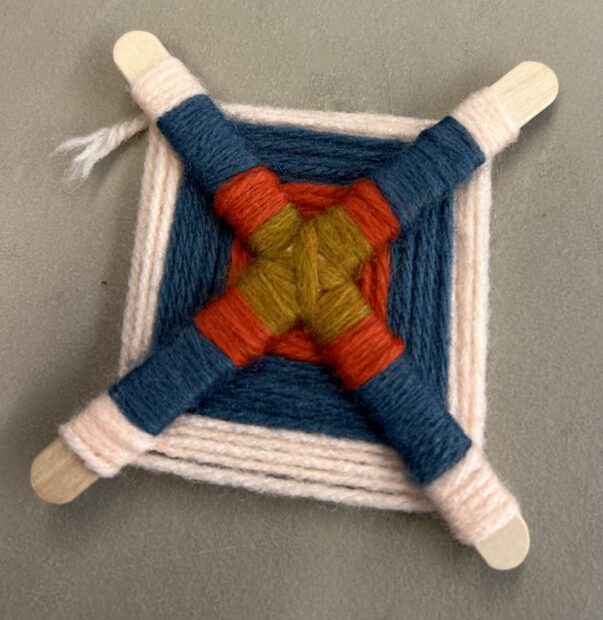
Josie Raya, Miss Blackfoot High, was one of the teens who helped teach students about Shoshone-Bannock life and culture. “We want to share our culture, heritage, and traditions, and show how life is for Native Americans, and that we’re thriving,” she said.
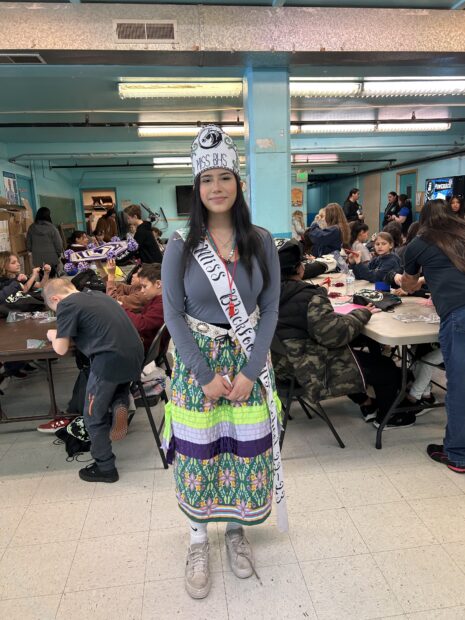
This story is part of a series that was made possible with a generous grant from the Education Writers Association.

